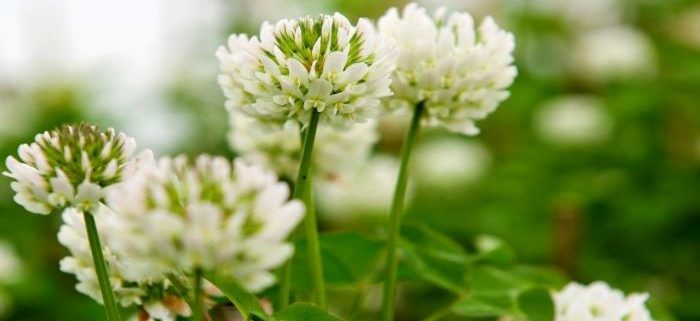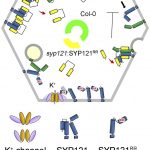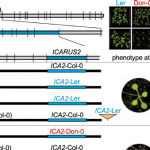White clover – out of the freezer and into the world
Griffiths et al. examine how allopolyploidy facilitated the expansion of white clover. Plant Cell https://doi.org/10.1105/tpc.18.00606
By Andrew Griffiths; Forage Genetics, AgResearch, Grasslands Research Centre, Palmerston North, New Zealand and Stig Uggerhøj Andersen; Department of Molecular Biology and Genetics, Aarhus University, Aarhus, Denmark
Background:
White clover (Trifolium repens) is found in lawns and grasslands around the world. It is used in agriculture for high quality animal feed, where its ability to fix atmospheric nitrogen in symbiosis with soil bacteria reduces the need for application of chemical fertilizers. White clover is an allopolyploid, which means that it harbors two distinct subgenomes as a result of the merging of genetic material (genomes) from two ancestor clovers. In contrast to white clover, these European ancestors are confined to specialized habitats. One is found in high alpine screes and the other on the coast within 100 meters of the shore.
Question:
We wanted to understand how and when the two ancestors merged to form white clover and how the ancestral genomes responded to being joined within the same plant.
Findings:
We confirmed the identity of white clover’s ancestors using genomic data and found that white clover originated during the last European glaciation ~15–28,000 years ago. We determined that white clover arose from multiple genome merging events, enabling carry-over of variation from its ancestors into the genetically diverse white clover of today. We observed that the ancestral genomes had remained largely intact within white clover through the thousands of generations since they merged. This has left white clover with a very large number of active genes. We could show that white clover has exploited this genetic potential by switching from activating a gene from specific pathways in one subgenome to activating the matching gene in the other subgenome depending on the tissue. This enables white clover to fine-tune its complement of flavonoids and other secondary metabolites that are important for interactions with microbes and the environment. Our results highlight white clover as an example of allopolyploidy-facilitated habitat expansion, where two ancestor genomes, adapted and confined to very different and highly specialized environments, expanded to a global presence following merging during the last European glaciation.
Next steps:
We are now investigating how white clover and its subgenomes respond to different environmental cues, and how these responses influence ecological success.
Andrew G. Griffiths, Roger Moraga, Marni Tausen, Vikas Gupta, Timothy P. Bilton, Matthew A. Campbell, Rachael Ashby, Istvan Nagy, Anar Khan, Anna Larking, Craig Anderson, Benjamin Franzmayr, Kerry Hancock, Alicia Scott, Nick W. Ellison1, Murray P. Cox, Torben Asp, Thomas Mailund, Mikkel H. Schierup, and Stig Uggerhøj Andersen (2019). Breaking Free: the Genomics of Allopolyploidy-facilitated Niche Expansion in White Clover. DOI: https://doi.org/10.1105/tpc.18.00606
Key words: polyploidy, Trifolium, homoeologous




